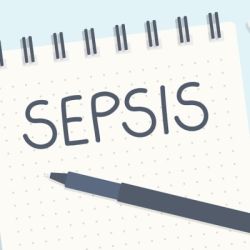Sepsis and septic shock are accompanied by haemodynamic, microcirculatory and metabolic changes. These changes can lead to impaired tissue oxygenation, multiorgan damage and death. A common hallmark of sepsis is reduced blood pressure. An increase in nitric oxide (NO) because of inflammation can contribute to vasodilation. On the other hand, a decrease in NO can induce microvascular dysfunction.
There is a hypothesis that inhibition of NO generation can restore blood pressure and improve outcomes in sepsis. The nitric oxide synthase (NOS) inhibitor L-NAME has been clinically tested as a potential treatment for sepsis. Initial studies show that L-NAME produced haemodynamic benefits by increasing blood pressure. However, treatment with L-NAME was associated with reduced cardiac output, increased pulmonary artery pressure, end-organ damage and mortality. These adverse effects were confirmed in subsequent studies where NO was reduced by treatment with pyridoxylated haemoglobin polyoxyethylene (PHP). Treatment with PHP showed increased mortality in patients with a SOFA score of > 13. These studies show that the inhibition of NO synthesis is detrimental to patients with sepsis.
However, since these studies, significant advances have been made in understanding the molecular mechanisms of the NO pathway. The endogenously produced inhibitor of nitric oxide synthase, asymmetric dimethylarginine (ADMA) and its pathological activities have emerged as an important arm of the NO-pathway biology. ADMA can induce endothelial dysfunction and produce harmful effects on the cellular and mitochondrial function of the target organs. Patients with sepsis have high levels of ADMA levels. These levels correlate with disease severity and mortality. ADMA is also a strong predictor of 30-day mortality in sepsis. There are studies that consider ADMA as a potential biomarker of sepsis-associated mortality.
Preclinical studies show that increased ADMA due to the deletion of the ADMA-metabolizing enzyme dimethylarginine dimethylaminohydrolase (DDAH) gene reduced survival in the polymicrobial sepsis model. On the other hand, reduction of ADMA by increased expression of DDAH-2 resulted in organ protection and improved survival. Recent studies demonstrate that ADMA levels in the blood can be reduced by treatment with recombinant DDAH molecule. Therefore, a new perspective on the role of the NO pathway in sepsis and ADMA lowering as a potential therapy target has emerged. ADMA induces microvascular dysfunction, proinflammatory and prothrombotic state in the endothelium, the release of inflammatory cytokines, oxidative stress and mitochondrial dysfunction.
Click here for more Sepsis news.
Source:Critical Care
Image Credit: iStock
References:
Singh J, Lee Y, Kellum JA (2022) A new perspective on NO pathway in sepsis and ADMA lowering as a potential therapeutic approach. Crit Care. 26, 246.
Latest Articles
Sepsis, Organ Damage, NO pathway, ADMA
Role of NO pathway in Sepsis



















